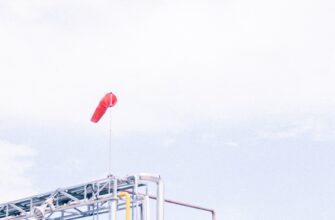- Introduction: Unlocking ADA’s Earning Potential
- What is Cardano (ADA) Staking?
- Understanding Liquidity Mining
- How to Leverage Kraken for ADA Staking and Liquidity Mining
- Staking ADA on Kraken
- Liquidity Mining with ADA (Using Kraken as On-Ramp)
- Benefits of Combining Strategies
- Risks and Key Considerations
- Frequently Asked Questions (FAQ)
- 1. Can I directly liquidity mine ADA on Kraken?
- 2. What’s the minimum ADA for staking on Kraken?
- 3. How often are staking rewards paid?
- 4. Is liquidity mining safer than staking?
- 5. Can I unstake ADA instantly on Kraken?
- 6. Which wallets support Cardano liquidity mining?
- Conclusion: Strategic ADA Growth
Introduction: Unlocking ADA’s Earning Potential
Cardano (ADA) holders seeking passive income have two powerful tools at their disposal: staking and liquidity mining. While Kraken excels as a user-friendly platform for ADA staking, liquidity mining typically occurs in decentralized ecosystems. This guide demystifies how to leverage Kraken as your gateway to both strategies, helping you optimize returns while managing risks. We’ll break down the mechanics, benefits, and step-by-step processes to turn your ADA into a revenue-generating asset.
What is Cardano (ADA) Staking?
Cardano’s proof-of-stake (PoS) blockchain allows ADA holders to earn rewards by participating in network security. Unlike mining, staking doesn’t require expensive hardware. Instead:
- Delegation: Users “stake” ADA by delegating it to a stake pool operated by validators.
- Consensus: Pools validate transactions and create new blocks, earning ADA rewards.
- Rewards: Delegators receive regular payouts proportional to their staked amount, typically 3-5% APY.
Kraken simplifies this process by managing technical complexities, making staking accessible to beginners.
Understanding Liquidity Mining
Liquidity mining involves providing crypto assets to decentralized exchanges (DEXs) like SundaeSwap or Minswap to facilitate trading. In return, providers earn:
- Trading fees from swaps in their liquidity pool
- Additional token incentives (e.g., SUNDAE for ADA pairs)
Key difference from staking: While staking supports blockchain security, liquidity mining enables decentralized trading. Returns can be higher but come with unique risks like impermanent loss.
How to Leverage Kraken for ADA Staking and Liquidity Mining
Kraken specializes in ADA staking, while liquidity mining requires transferring ADA to Cardano DeFi apps. Here’s how to integrate both:
Staking ADA on Kraken
- Sign up/Log in to Kraken and complete verification
- Deposit ADA into your Kraken account
- Navigate to Earn → Stake → Select ADA
- Choose amount and confirm staking
- Earn rewards automatically (paid twice weekly)
Liquidity Mining with ADA (Using Kraken as On-Ramp)
- Buy ADA on Kraken and withdraw to a Cardano wallet (e.g., Eternl, Nami)
- Connect wallet to a Cardano DEX (e.g., WingRiders, MuesliSwap)
- Add ADA to a liquidity pool (e.g., ADA/USDT)
- Earn LP tokens and monitor rewards
Benefits of Combining Strategies
- Kraken Staking Advantages:
- No minimum ADA requirement
- Zero technical setup
- Instant unstaking (no waiting period)
- Liquidity Mining Perks:
- Higher potential APY (5-20%+)
- Dual rewards in ADA + partner tokens
- Supports Cardano’s DeFi growth
Risks and Key Considerations
- Staking Risks:
- Market volatility affecting ADA value
- Platform security (mitigated by Kraken’s robust infrastructure)
- Liquidity Mining Risks:
- Impermanent loss from price divergences in trading pairs
- Smart contract vulnerabilities
- Regulatory uncertainty
- Always: Diversify investments, never stake/lock more than you can afford to lose, and research pools thoroughly.
Frequently Asked Questions (FAQ)
1. Can I directly liquidity mine ADA on Kraken?
No. Kraken offers ADA staking but not native liquidity mining. For liquidity mining, transfer ADA from Kraken to Cardano DeFi apps.
2. What’s the minimum ADA for staking on Kraken?
Kraken has no minimum for ADA staking. You can stake any amount, though transaction fees apply.
3. How often are staking rewards paid?
Kraken distributes ADA staking rewards twice weekly – every Monday and Thursday.
4. Is liquidity mining safer than staking?
Generally, staking carries lower risk. Liquidity mining involves complex factors like impermanent loss and smart contract risk. Beginners should start with staking.
5. Can I unstake ADA instantly on Kraken?
Yes! Unlike Cardano’s native staking (which has a 2-3 day unbonding period), Kraken allows instant unstaking with no delays.
6. Which wallets support Cardano liquidity mining?
Popular options include Eternl, Nami, and Flint. Ensure your wallet connects to Cardano DEXs and supports dApp interactions.
Conclusion: Strategic ADA Growth
By combining Kraken’s hassle-free staking with strategic liquidity mining on Cardano DeFi, you can maximize ADA’s earning potential. Start with staking for steady returns, then explore liquidity mining as you deepen your crypto expertise. Always prioritize security: use Kraken’s insured custodial services for storage and trusted wallets like Vespr for DeFi activities. As Cardano’s ecosystem evolves, these integrated strategies position you at the forefront of Web3 wealth generation.








